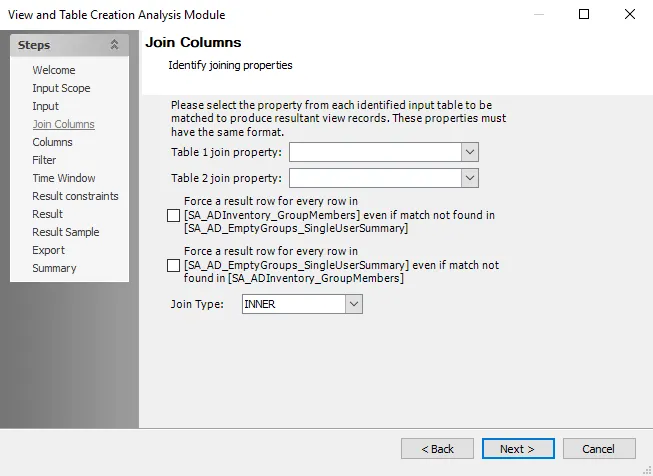SQLViewCreations: Join Columns
Use the Join Columns page to select a column from each source table to join together on the resulting table or view. The options on this page are only enabled if two tables are selected on the Input Source page.
NOTE: The SQLViewCreation analysis module can join two tables, using a simple equi-join condition of two predicates. For composite joins with two or more tables using a conjunction of predicates, use the SQLscripting analysis module. See the SQLscripting Analysis Module topic for additional information.

Use the Table 1 join property and Table 2 join property fields to select join predicates from both tables. Join predicates are columns containing analogous values that are used to match records in referenced tables.
Next, specify how to join these tables. To automatically select the appropriate join type, select one or more of the checkboxes. The selection in the Join Type field updates based on user selections.
To manually select, use the Join Type field. The selection here may update the above checkboxes. The following options are available:
-
Join Type – Select a join type from the drop-down:
NOTE: Left is the first table referenced, right is the second table.
- Inner Join – Returns records that have matching values in both tables
- Right Outer Join – Returns all records from the left table, and the matched records from the right table
- Left Outer Join – Return all records from the right table, and the matched records from the left table
- Full Outer Join – Return all records when there is a match in either left or right table
NOTE: The join property is the column found within both tables. The two columns can have different names. However, in the results set, everywhere a value in the first column matches the value in the second column, rows from the respective tables are joined together.
After selecting a column from each data source to join, click Next to select columns to transfer to the resulting table or view.